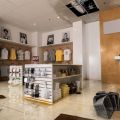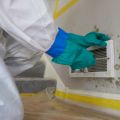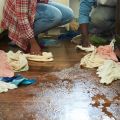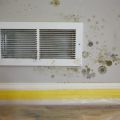9/28/2021
After a Flood: Limit Mold in Your Business in 4 Easy Steps
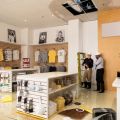
7/23/2021
Flooding remains as the most common natural disaster in the United States. Without a quick response, major problems can develop quickly. A water-damaged commercial facility can support mold growth in as little as 24 to 48 hours, placing your equipment, furniture and building at risk. In addition, exposure to moldy environments is detrimental to human health, especially to people with existing respiratory conditions or a compromised immune system, as reported by the Centers for Disease Control and Prevention (CDC).
Mold growth in your commercial facility can have serious implications. The experts at ServiceMaster by Reed has compiled some tips on how to limit mold in your business after a flood.
Mold growth in your commercial facility can have serious implications. The experts at ServiceMaster by Reed has compiled some tips on how to limit mold in your business after a flood.
What Items are Susceptible to Mold Growth?
Many items in your business are more prone to developing mold after a flood than other materials. These include:
- Carpets, drapery and rugs. Simply drying out these items may not be sufficient to prevent mold growth after water damage. They may have to be discarded or replaced. It's best to connect with a professional to assess the damage and see if repair or replacement is required.
- Plastic, metal and glass. With proper cleaning and disinfection, nonporous items such as glass, metal and plastic can be salvaged.
- Upholstered furniture and wood. Mold can easily get trapped in porous materials, so these items may have to be discarded, as well as those that were completely submerged in water.
How to Prevent Mold After a Flood
Totally eliminating all mold spores from your facility may not be possible, but there are several steps you can take to limit mold development.
Water removal and complete drying of all areas
Water removal and complete drying of all areas
- The sooner you extract water from your facility, the better. This is because mold spores disperse and develop quickly.
- To remove excess water and clean materials like exposed wood framing and studs, use a wet-dry shop vacuum.
- Keep a healthy ventilation by opening doors and windows if the outside air isn't very humid.
Disposal of mold-infested items
- Materials that have been completely submerged in water must be discarded.
- Porous materials like books and papers, drapery and upholstery may be salvageable. Mold growth can be prevented on a material that has been wet for less than 48 hours by cleaning and disinfection. However, if mold does grow, the item must be discarded immediately.
- Discard wet insulation and contaminated porous materials like ceiling tiles and drywall.
Limiting moisture and humidity
- Use dehumidifiers and fans to reduce moisture if it's safe to utilize electricity.
- If mold has already started growing, however, do not use fans as they will only disperse mold spores all over the surrounding areas.
Calling a restoration company
- Contacting a trusted and reliable restoration company like ServiceMaster by Reed is one of the most effective ways to prevent mold after a flood.
- Mold professionals know how to properly address the mold issue using the right tools and procedures, providing you with a quick response and peace of mind.
Contact a Mold Remediation Professional Today
For a fast response to your mold emergency, ServiceMaster by Reed is available 24 hours a day, 7 days a week at (954) 799-4420. We service commercial properties in Hollywood, Florida and surrounding areas and counties.
- We offer FREE estimates for all insurance claims
- We bill insurance directly, so you don't have to
- 100% guaranteed work with years of industry experience
You may also connect with us online to schedule an appointment, or email us at smreedoffice1@aol.com. Our office is located in 1210 Stirling Rd. Unit # 8A Dania Beach, FL 33004.
Don't know what to do next? We do. Contact us today!
Don't know what to do next? We do. Contact us today!
Other articles and publications:
Learn how to get your business back up and running after a hurricane. Call ServiceMaster by Reed at (954) 799-4420 for flood damage restoration in Miami, FL.
Learn how a small business disaster recovery plan can help you succeed after a disaster. Call ServiceMaster at (954) 799-4420 for Dania Beach, FL reconstruction services.
9/28/2021
ServiceMaster by Reed prepared safety tips and preparation during flash floods. Call us for predisaster preparation and water damage restoration.
6/25/2021
Learn about the different types of mold found indoors. Contact ServiceMaster by Reed at (954) 799-4420 for mold remediation service in Miami, Florida.
8/25/2021
Learn about tips to handle the flood insurance claim process. Contact ServiceMaster by Reed for Miami, FL flood damage restoration at 954-799-4420.
6/25/2021
Learn about water damage prevention in homes. For Hollywood water damage restoration service, contact ServiceMaster by Reed at (954) 799-4420.
8/25/2021
Articles and publications of other companies:
We know that emergencies like mold and water damage don’t follow a schedule, which is why we offer 24 / 7 emergency services and are ready to assist you as soon as you need help.
12/17/2020
Learn about mold, its health risks and prevention. Call ServiceMaster at (813) 295-7797 for mold removal & remediation in Pinellas County, FL. 24/7 available
12/11/2021
Call ServiceMaster by PWF today at (866) 599-0871; Jacksonville Beach, Fl’s leading property damage restoration company. We are Licensed, Bonded, and Insured.
11/25/2020
Never wait for last minute preparations or typhoon warnings before you make preparations for an incoming hurricane. An effective and planned-out anti-hurricane program is one great solution.
7/22/2020


